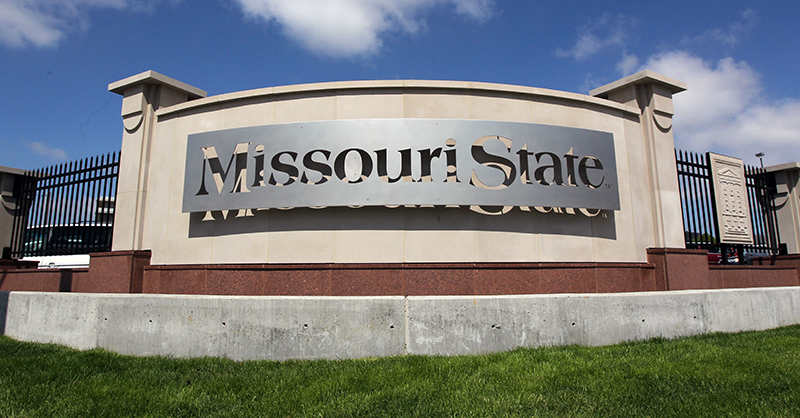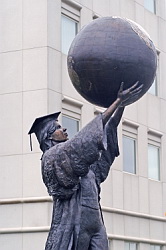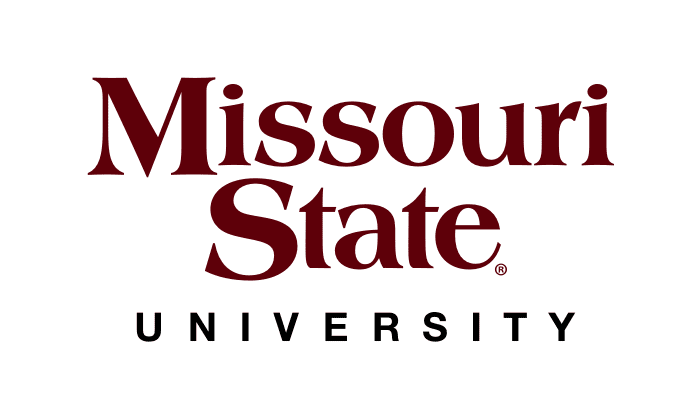Liaison’s Laura Nicole Miller recently sat down with Missouri State University’s Associate Provost and Dean of the Graduate College Dr. Julie Masterson and Director of Graduate Enrollment Management Stephanie Praschan. Read on to hear how Missouri State is addressing their most pressing admissions and recruitment marketing challenges by implementing new technology.

Laura Nicole Miller (LNM), Liaison: Thank you for your time today, Julie and Stephanie! Let’s start by addressing some overall graduate education trends.
The latest report from the International Institute of Education (IIE) confirms that international students’ interest in studying in the U.S. has remained steady, but international graduate student enrollment has fallen sharply, with graduate deans at 46% of the institutions that responded to the survey reporting steep declines. Does this trend reflect what you’re seeing at your University?
Dr. Julie Masterson (JM), Missouri State University: Like everyone else, we’ve seen a dip in our international enrollment — about 8-9% over the last four years. Actually, compared with some, we’re in good shape being limited to that decline!
We’ve seen the decrease primarily in what we call our walk-in students — students we recruit through generic ways, such as graduate fairs and international student events in various countries. We were doing well with international students and then all these things started to happen with the political landscape, which has been really problematic.
LNM: It sounds like geographic diversity is something that you’re working on addressing. What about the age diversity of your applicant pool? Across higher education as a whole, the number of college and graduate students over age 35 is expected to comprise 19% of the graduation total by the year 2020. How does this compare to what you’re seeing at Missouri State?
JM: Good question! Our largest program is the MBA, then the master’s in interdisciplinary studies, then comes the doctorate in nurse anesthesia practice and some of the allied health programs. The students in those programs — other than those in the nurse anesthetist program — tend to be right out of undergrad programs so I didn’t know what we were going to find when we looked into these numbers.
When we analyzed the data, we found that 29% of our total graduate student population was 35 and older. I was floored! Then I thought, what if we only analyze degree-seeking students as opposed to those who are just taking a class? It’s not going to be that high. Wrong — it was 26%! That was consistent with what we had the year before and was actually down a little from 2015.
We offer many popular master’s degrees (MBA, Professional Studies, Cybersecurity, Criminology, Education) as well as some professional doctorates in Nursing online — if we know one of the reasons these programs are appealing is that older students are more likely to be working folks looking for part-time, flexible options, we’ll promote that even more since this group is clearly such an important component of our student body.
LNM: Interesting insights! Did you break the data down by gender as well?
JM: I have no reason to believe the gender distribution would be any different than our student body, which is slightly more female, but I didn’t know the age breakdown was going to turn out the way that it did either!
Overall, we are not satisfied with the diversity of our applicant pool or our current student population. In fact, this is one of the major goals in the University’s long-term plan. We’ve been making steady progress — we’re about to start year three of the plan.
We live in an area with very limited racial and ethnic diversity. It’s challenging to recruit faculty to come and stay here, and it’s challenging to recruit students to come and stay here. Our retention rates aren’t as high as we’d like them to be. We’ve really devoted a lot of university resources — time, effort and brainpower — into trying to do something about this, as it’s critical for all of our students to be exposed to diversity for an optimal education.
In Fall 2017, on the graduate level our underrepresented total was 10.6%, and we’re proud of that because it was up slightly from 9.6% in 2016 and 8.8% in 2015. We just got the data for Fall 2018 and although we set an all-time high in the total number of underrepresented students, the percentage was slightly down (10.3%) because our total enrollment increased. We’re making slow but steady progress, and we’re hoping to continue to see this rise. This is where GradCAS™ [Liaison’s Centralized Application Service (CAS™) for programs not supported by an association-based service] and EMP™ [Liaison’s Enrollment Marketing Platform] can have a direct effect.
By having a wider market through Liaison’s CASs, we can really highlight that we are very affordable. Our marching line is that we’re quality education at an affordable price. Even our online rate is affordable compared to many others. If we can expand the reach of this message and spread the word that we offer a lot of options regarding delivery formats, I think that’s going to help.
All of the changes we’re making to our admissions process are working together — our recruiting will be better, we’ll be in new markets and we’ll have a better application process. We hope that increases applications from underrepresented students.
LNM: That’s a great transition to my next question — You’re currently onboarding GradCAS. Can you please tell us more about how you decided to join the service and how you got buy-in from your internal stakeholders?
JM: There were three main reasons why we chose GradCAS. First, we valued the ability to configure applications for individual programs. I know from my experience with CSDCAS™ [the CAS for communication sciences and disorders] that GradCAS will allow Missouri State’s Application Materials section of the application to look different from other schools’ applications. Even though all programs are accredited by the same body and offer similar courses, we want to be unique.
I absolutely had to have something that worked for a wide range of programs. For example, our master’s in music needs students to upload or link to a YouTube video that shows them conducting an orchestra or sharing something they’ve written, which is very different from the experimental psychology program that requests information about the statistical programs that students have used and what their leadership qualities are. Finding something that could accommodate that range was really important to me.
Second, the solution had to be affordable, which GradCAS certainly is since it’s available to programs at no cost. In the earliest stages when we were sending out our requests for proposals, we received a lot of attractive bids. Yes, they offered solutions that were configurable to meet our needs, but they were so far out of our price range that it didn’t matter!

Finally, I don’t think my third reason is unique to Missouri State, but it may not apply to everyone — I had to have something that requires minimal ongoing support from computer services. It wouldn’t work for us to have a system that was going to have to require that someone from computer services tweak it; I had to have a tool that could be configured and managed from my unit.
GradCAS is the solution that met all those requirements. Computer services has to do the initial data transfer from WebAdMIT™ [the admissions management backend of Liaison’s CASs] into our student information system, but once they figure that out, we can take over.
LNM: As you mentioned, you have experience with quite a few other CASs that are powered by Liaison, including CSDCAS, OTCAS™ [the CAS for occupational therapy programs], PTCAS™ [the CAS for physical therapy programs], DICAS™ [the CAS for dietetic internship programs] and CASPA™ [the CAS for physician assistant programs]. What outcomes have you driven with these services? Are you expecting the same with GradCAS?
JM: One major outcome is that we have 250 individualized application sites; another is that we started an important conversation about best practices in admissions. It’s just the beginning — we made progress because we changed some aspects of our admissions processes as we configured individual sites, but there’s more work to do.
Stephanie Praschan (SP), Missouri State University: Already I feel like we’ve been able to empower our departments to move into reviewing applicants in a holistic manner. We’ve had good conversations about how to streamline our processes, so we can speed up applicant feedback, and that’s going to be a huge benefit for us and for future Missouri State students.
JM: Stephanie’s right that time to decision is a major issue — it’s the name of the game for a lot of programs. Sometimes students will say yes to whoever says yes to them first!
The extent to which Liaison’s team streamlines application processing is amazing. There are so many points in the process where we drop our jaws at how much more efficient it is! Let me give you an example: The way admission worked in the past at Missouri State was that students apply to the Graduate College first and we determine if they meet our minimum requirements. Those who do got sent to the department. If you think about it, that’s kind of backwards. What we really need to know first is if the department would like to offer a student admission, rather than if he/she meet the minimums.
Now, the departments can do their processing and when offers of admission are recommended, Stephanie can run a report to ensure that the students meet the Graduate College’s minimum requirements. Sometimes we have students who don’t meet our minimum test score of GPA requirements, but these same students have wonderful research or teaching experience. The departments absolutely can ask for a waiver of those requirements. In the old system, the student actually had to be denied and the departments had to go through all these complex steps — now acceptance can all happen within a cycle and the student doesn’t have to know what’s going on in the backend!
LNM: Sounds like that will have quite an effect on your time to decision! Are you or will you be tracking your time savings?
SP: Yes, we have been and will continue to track our time to decision. I’m very excited about the robust reporting that I will be able to do with GradCAS and how we will be able to closely watch applicant pool trends.
 JM: We can track time to decision and the decision point. Typically, the department decides whether we grant admission— we’re hoping that with GradCAS when the application is complete, the department will be able to review and act as soon as possible. Once materials are complete, we can set up an email to automatically go to the applicant to let them know what’s going on — that we’re excited to have received the application and that the department begins evaluating applications on a certain date. They’re not left hanging.
JM: We can track time to decision and the decision point. Typically, the department decides whether we grant admission— we’re hoping that with GradCAS when the application is complete, the department will be able to review and act as soon as possible. Once materials are complete, we can set up an email to automatically go to the applicant to let them know what’s going on — that we’re excited to have received the application and that the department begins evaluating applications on a certain date. They’re not left hanging.
SP: That message tells applicants they’re under consideration, they haven’t been eliminated. We get quite a few calls asking about status —the ability to log in and see which recommendations are here and which scores have been received is going to be a huge relief for applicants’ stress and anxiety levels.
LNM: It sounds like you’re making quite a few changes to your admissions process! As it stands now, would you describe your structure as centralized, de-centralized or a combination of both?
JM: From a policy standpoint, it’s a combination — the departments make a recommendation about whether to admit a student and we follow that. I have never gone against a department’s recommendation. This is an incredible example of how GradCAS will make a huge difference.
With a CAS, our programs are part of a centralized pool, so I can benchmark against a larger body of programs. I can see how my physical therapy applicants compare to the entire pool in PTCAS, or I can select five, six or seven competitor programs and see how my applicant demographics compare to those. From a discipline level, we’ve looked at how audiology compares to physical and occupational therapy. Because you have a critical mass participating, you can make those kinds of comparisons. I have really accessible data about our applicants and yield rate based on demographics.
LNM: Now that you do have greater insight into trends in your applicant pool and across graduate education as a whole, what’s still keeping you up at night? What is your biggest stress at this point in the admissions cycle, and is that stress different this year than it has been in previous years?
JM: Well, we’ve finally launched GradCAS, so that’s the main thing keeping me up at night — it took a lot of planning and work to get everything set up, and I want to make sure the faculty love it and see it for the tool it could be.
SP: if things aren’t smooth, if issues come up when you’re onboarding and you’re still making decisions and getting things sorted out, people won’t trust the product. So, what’s keeping me up is making sure that all of our materials are right and that we’ve communicated enough to the people who will be using the service. Of course, we know we will all continue learning new features and ways to use the product even better.
I’m focusing on communicating to our users that if they’re in the service and can’t figure out what to do, I can set up an online meeting right then and offer one-on-one guidance. We will also have weekly open help sessions for users to come by and get one-on-one help, an online toolkit with training materials specific to MSU, and options for department trainings. I’m thinking about how we can be accessible, because they’re going to have questions. As easy as GradCAS is to pick up and learn, I want to be prepared for any users who require a little extra attention.
I didn’t have any CAS experience prior to this project, but I’ve found that the learning curve has been pretty easy. It’s so dynamic for us to be able to narrow down what each department needs. Graduate admissions is a pretty complex process because there are multiple levels within the program and university requirements and it can be very confusing for applicants to know what they need to do. Since GradCAS allows us to create department pages and display only the information about applicants’ programs of interest, we’re able to eliminate a lot of the confusion.
JM: Overall, we’re very excited. GradCAS is going to help us inch towards implementing best practices across all of our programs. It is going to make it possible for us to be on top of all the admissions practices our programs are using. We’ll be able to understand them, defend them or modify them if needed — that level of control wouldn’t have been possible without this proven admissions technology.
To learn more about GradCAS, visit gradcas.org.
